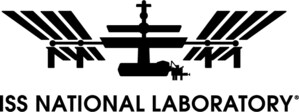SpaceX CRS-27 Splashes Down in the Atlantic, Returning Science to Researchers on Earth
KENNEDY SPACE CENTER, Fla., April 17, 2023 /PRNewswire/ -- Over the weekend, SpaceX completed its 27th Commercial Resupply Services (CRS) mission to the International Space Station (ISS) when the Dragon spacecraft splashed down off the coast of Florida, returning nearly 700 pounds of research to Earth for further analysis. The Dragon vehicle spent 30 days docked to the ISS, where astronauts conducted a variety of investigations and technology demonstrations sponsored by the ISS National Laboratory aimed at benefiting humanity and fostering commerce in low Earth orbit.
Below are highlights of some of the ISS National Lab-sponsored research that returned on SpaceX CRS-27:
- A team of researchers from Rhodium Scientific and the University of Florida tested the concept of biomanufacturing in space using microbes. The project is supported by the Defense Advanced Research Projects Agency (DARPA) as part of its Biomanufacturing: Survival, Utility, and Reliability beyond Earth (B-SURE) program. The investigation examined how gravity affects the production of beneficial chemical compounds including therapeutics and nutrients from bacteria and yeast. Biomanufacturing in space can reduce risk for crews during long-duration space missions and benefit patient care on Earth by discovery of novel biological compounds or improved methods for their production.
- Two investigations using tissue chips to understand heart disease sought to examine how engineered cardiac tissues weaken in microgravity. These projects were funded by the National Institutes of Health through a multiyear partnership with the ISS National Lab as part of the Tissue Chips in Space initiative. Teams of researchers from Johns Hopkins University and Stanford University seek to better understand the progression of heart disease and develop better ways to treat patients on Earth. Both teams have previously launched tissue chip investigations to the space station, and these latest projects built on prior knowledge gained.
- Multiple projects funded by the U.S. National Science Foundation returned on this mission, including two investigations focused on the physical sciences. A project from Auburn University studied how micro-structured surfaces enhance the mobility of vapor to increase the rate of heat transfer from the surfaces. Results could lead to the development of new technologies to better remove heat in electronics. Another from City College of New York studied the structure and stability of foams and emulsions in microgravity. The project tested more eco-friendly ways to create foam products (which consist of gas bubbles dispersed in liquids or solids) and products made through emulsion (when tiny droplets of one liquid are dispersed in another fluid).
- A project from Georgia Institute of Technology that launched in 2022 utilized the Aegis MISSE Flight Facility to evaluate changes in the optical properties of common spacecraft materials as they were exposed to the extreme conditions of space. The research team will correlate this optical property data with material chemistry and expected lifetime data to produce a database. The database will be valuable both in remotely diagnosing the material health of spacecraft and in improving ground-based space environment simulation for materials testing.
- Researchers from MakerHealth sought to explore the effects of gravity on its AmpliRx modular biochemical manufacturing platform. The AmpliRx platform enables the distributed, affordable, and scalable production of medications using a membrane-to-membrane continuous flow reactor system that can operate without pumps or advanced instrumentation and runs using minimal power. This investigation was awarded through the Technology in Space Prize, funded by Boeing and the Center for the Advancement of Science in Space, Inc. (CASIS), manager of the ISS National Lab, in partnership with the MassChallenge startup accelerator program.
For more information about ISS National Lab-sponsored research that launched on SpaceX CRS-27, please visit our launch overview page.
To download a high-resolution photo for this release, click here.
About the International Space Station (ISS) National Laboratory:
The International Space Station (ISS) is a one-of-a-kind laboratory that enables research and technology development not possible on Earth. As a public service enterprise, the ISS National Lab allows researchers to leverage this multiuser facility to improve life on Earth, mature space-based business models, advance science literacy in the future workforce, and expand a sustainable and scalable market in low Earth orbit. Through this orbiting national laboratory, research resources on the ISS are available to support non-NASA science, technology and education initiatives from U.S. government agencies, academic institutions, and the private sector. The Center for the Advancement of Science in Space, Inc. (CASIS) manages the ISS National Lab, under Cooperative Agreement with NASA, facilitating access to its permanent microgravity research environment, a powerful vantage point in low Earth orbit, and the extreme and varied conditions of space. To learn more about the ISS National Lab, visit www.ISSNationalLab.org.
Media Contact: |
Patrick O'Neill |
SOURCE International Space Station National Lab

WANT YOUR COMPANY'S NEWS FEATURED ON PRNEWSWIRE.COM?
Newsrooms &
Influencers
Digital Media
Outlets
Journalists
Opted In




Share this article